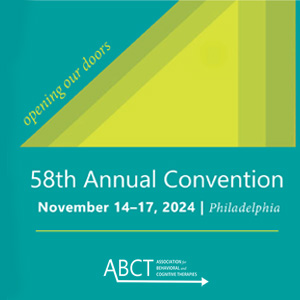Child / Adolescent - Externalizing
Examining factor structure and personality correlates of measuring aggression in at-risk adolescents
(PS6-9) Examining Factor Structure and Personality Correlates of Measuring Aggression in At-risk Adolescents

Mackenzie Murphy, M.S.
Graduate Student
Washington State University
Pullman, Washington, United States- CB
Christopher T. Barry, Ph.D.
Professor
Washington State University
Pullman, Washington, United States - HK
Hyunah Kim, M.S.
Graduate Student
Washington State University
Pullman, Washington, United States
Author(s)
Co-Author(s)
Aggression is a complex set of problematic behaviors and is frequently divided into two types based on its apparent function: proactive, or unprovoked and goal directed, and reactive, or in response to perceived threat (Dodge & Coie, 1987). Individuals can also hold beliefs about the acceptability of aggressive behavior both generally and situationally (Huesmann & Guerra, 1997). Aggression has previously been positively associated with psychopathy (Penney & Moretti, 2007) and grandiose (i.e., exhibitionism and exploitation of others) and vulnerable (i.e., self-absorbed, emotionally unstable) narcissism (Barry et al., 2014), and negatively associated with prosocial tendencies (McMahon et al., 2013). Peer nomination can be used to measure perceived aggression by others (Mehari et al., 2019). This study considered whether different methods of measuring aggression represent statistically divergent factors and whether these factors are differentially related to personality factors.
The sample consisted of 204 participants ages 16-19 recruited from a 22-week quasi-military residential program. Participants completed the Proactive/Reactive Aggression Scale (Dodge & Coie, 1987), Beliefs About Aggression Scale (Huesmann & Guerra, 1997), Antisocial Process Screening Device (APSD; Frick & Hare, 2002), Narcissist Personality Inventory (NPI-16; Ames et al., 2006), Hypersensitive Narcissism Scale (HSNS; Hendin & Cheek, 1997) and Prosocial Tendencies Measure-Revised (PTM-R; Carlo et al., 2003) and nominated up to three peers in the program as the most aggressive.
A Confirmatory Factor Analysis (CFA) was run using lavaan in R with maximum likelihood with robust standard errors (MLR). The model demonstrated close absolute fit (SRMR = .01), absolute fit with a parsimony correction (RMSEA = .00), and relative fit (CFI = 1.00). The test of model fit was non-significant, χ2(3) = 1.63, p = .65. Proactive (β = .63) and Reactive (β = .83) aggression loaded onto a Behavior factor, Normative (β = .82) and General (β = .73) beliefs about aggression loaded onto a Beliefs factor, and standardized peer nomination scores loaded on a Peer factor. Covariances between factors were less than .60. Correlations between individual-level factor scores and personality variables (i.e., psychopathy, grandiose and vulnerable narcissism, prosocial tendencies) and comparison tests of overlapping correlations were run to determine whether associations with personality variables were significantly different across factors. All factors had significantly different associations with psychopathy: Behavior, r = .59, p < .001, Beliefs, r = .48, p < .001, Peer, r = .21, p = .003. Behavior, r = .35, p < .001 and Beliefs, r = .34, p < .001 had stronger correlations with grandiose narcissism than Peer, r = .14, p = .05, and Behavior, r = .30, p < .001, had a stronger correlation with vulnerable narcissism than Beliefs, r = .12, p = .08. There were no significantly different correlations with prosocial tendencies. The construct of aggression in at-risk adolescents differs depending on method of measurement and is associated with distinct patterns of personality factors, which has implications for developing targeted interventions for adolescents with aggressive tendencies.

.png)
